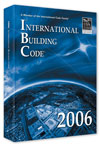
To make it simple, it may be best to think proprietary versus generic. Generic products or systems are the common type building materials we have all come to know through decades of construction. Masonry, wood, stone, stucco, gypsum wallboard, building paper and wood shingles are all examples of generic products. These products have been the mainstay in American construction for decades. If a product or system is generic and common, there is a very good chance it is in the building code. Approval and installation regulations for these products are often found in the various chapters of the building code or referenced through an American Society of Testing Materials standard. This is particularly true with the International Building Code as it is more referenced based. The International Residential Code is more prescriptive and designed for single-family homes and townhouses. Both codes provide the basic minimum requirements for installation to meet life and safety, the two primary objectives of the code.
Unique products or innovative systems that are proprietary will typically get their code approval through an evaluation report. EIFS, housewraps, cement board siding and one-coat stucco are all examples of such proprietary systems or products. Since these products are not specifically called out or listed in the code, how do they get their approval for installation?
HOW IT WORKS
We know the building code is set up with chapters and these chapters set standards for the basic building materials that have history in the United States. If we only went by the code and the chapters that list those generic products, we would be limited in design and creativity. However, being Americans, we pride ourselves on innovation and do not want to be limited to only basic materials. In the desire to keep that American spirit of ingenuity alive, there is a very important part of both building codes, section 104. This section is entitled “Alternate materials, designs and methods of construction.” This section demonstrates and even encourages new and creative ideas in the construction industry.The key point is that the ultimate approval of any new product or system rests with the design team of record (architect) and in particular the building official. How do they decide to approve or disapprove a product and/or a system? It would be impossible to know everything about these new products and they need assistance in the decision-making process. The most popular method is through what is known as a legacy evaluation report. This report and system is administered through the International Code Council of building officials.
The ICC has a set of acceptance criteria for a wide variety of products and systems. Manufacturers submit products and/or systems that have been tested to meet established criteria and prove compliance to those criteria. The ICC reviews the products and the testing submitted, and then decides if a report should be issued as compliant with acceptance criteria. The evaluation reports on these products and systems are available free to the public and available atwww.iccsafe.org. The report is meant to provide architects and building officials the confidence to allow the use of these products and/or systems that are not listed in the code. The evaluation report contains general information and installation instructions of the product or system. The report may also contain references to various related code sections and limitations to the product or system. In addition, the report may contain methods to construct fire-rated assemblies with the specific product or system.
If you are using one of these products and/or systems, you should be familiar with the report issued and the appropriate installation instructions in the most current report. Be cautious of limitations that may be listed in the report that may restrict or limit the use of the product or system.
